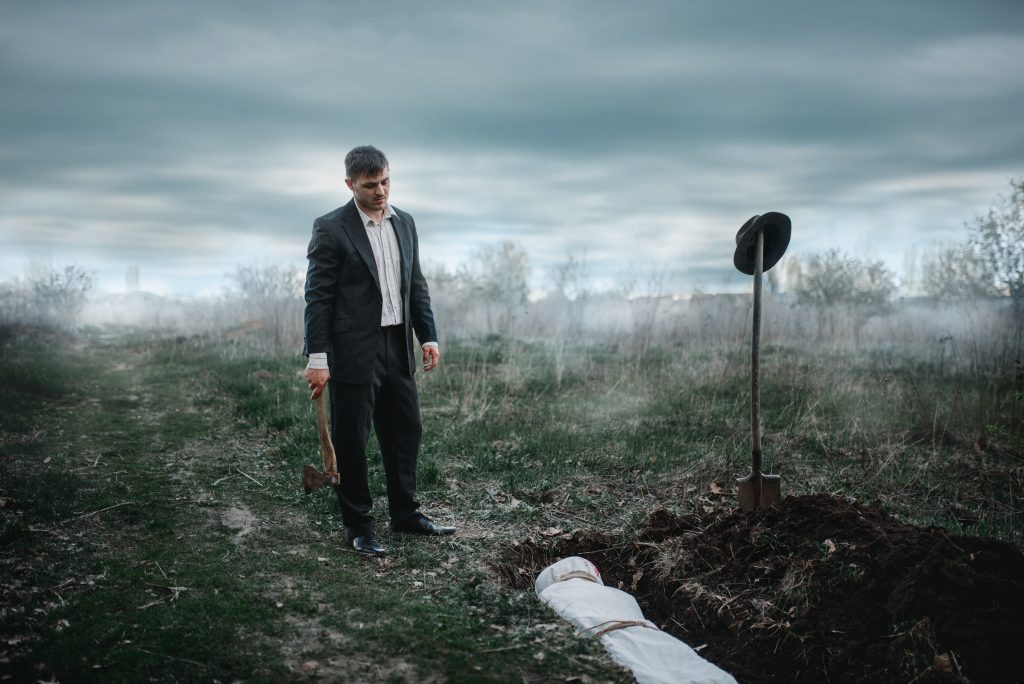
It is important for death investigators to have a working knowledge of all death scenarios. You should have a basic understanding of the characteristics and/or non-characteristic of what makes a serial killer, as opposed to a mass or spree kill.
In this way, you can identify the need for more expert involvement or discern if you may have a death committed by a serial killer in your area or one that has passed through.
Types of Multiple Killings
1. Mass Killing
The FBI defines mass murder as murdering four or more persons during an event with no “cooling-off period” between the murders. A mass murder typically occurs in a single location where one or more people kill several others.
2. Spree Killing
According to the FBI, the general definition of a spree killer is a person who commits two or more murders without a cooling-off period; the lack of a cooling-off period marking the difference between a spree killer and a serial killer
3. Serial Killings
Serial Murder is the premeditated killing of three or more victims, committed over time, in separate incidents, in a civilian context, with the murder activity being chosen by the offender.
Stable v. Transient Killers
The Stable Killer eg. Gacy, Dahmer
- Lives and works in one location for an extended period.
- Hunts and kills within the local area.
- Disposes of bodies in the same or similar areas.
- Disposal site selected for concealment.
- May return to the crime scene or burial site.
- Seldom travels, but when forced to travel it is usually for business, family visits, or personal recreation
The Transient Killer eg. Bundy, Lucas
- Seldom stays in one spot for more than a few weeks.
- Kills are spread out over a large area.
- Disposes of bodies in random locations.
- Disposal site selected for convenience.
- Seldom returns to the region of the crime.
- Travels continuously either for pleasure, to confuse law enforcement, or for new hunting grounds.
Classification of Serial Killers
1.Organized
2. Disorganized
3. Mixed – organized & disorganized
Organized Killer
The organized offender is described as leading an orderly life that is also reflected in the way he commits his crimes. Highlighting some proposed characteristics, he is claimed to be of average to high intelligence, socially competent, and more likely than the disorganized offender to have skilled employment. It is also claimed that he is apt to plan his offenses, use restraints on his victim, and to bring a weapon with him to commit the murder and to take the weapon away with him from the crime scene.
According to its proponents (e.g. Douglas et al., 1992), in general, organized offenders are hypothesized to kill after undergoing some sort of precipitating stressful event, such as financial, relationship, or employment problems.
Their actions are thought to reflect a level of planning and control. The crime scene will therefore reflect a methodical and ordered approach. This is seen as being a consequence of the organized offender being socially skilled and adept with handling interpersonal situations. Organized offenders are thus more likely to use a verbal approach with victims prior to violence and all these aspects of the offender are presumed to be reflected in the crime scene.
Disorganized
In contrast, the crime scene of the disorganized offender is described as reflecting an overall sense of disorder and suggests little, if any, preplanning of the murder. The disarray present at the crime scene may include evidence such as blood, semen, fingerprints, and the murder weapon. There is minimal use of restraints and the body is often displayed in open view. The disorganized offender is thought to be socially incompetent and to have below-average intelligence
By contrast, Douglas et al. (1992) hypothesize that the disorganized offender kills opportunistically. He or she will live in close proximity to the crime scene.
A lack of planning before, during, or after the crime will be reflected in the spontaneous style of the offense and the chaotic state of the crime scene. This mirrors the offender’s social inadequacy and inability to maintain interpersonal relationships. The lack of normal, healthy social relationships increases the likelihood of sexual ignorance as well as the potential for sexual perversions or dysfunctions as part of the homicidal acts.
Mixed
The attack may involve more than one offender, there may be unanticipated events that the offender had not planned for, the victim may resist or the offender may “escalate” into a different pattern during the course of an offense or over a series of offenses.
The suggestion is that in this sort of crime, although there may be some evidence of planning, there will be poor concealment of the body. The crime scene might be in great disarray, and there will be a great deal of manual violence committed against the victim. The offender may be young or involved in drugs or alcohol.
